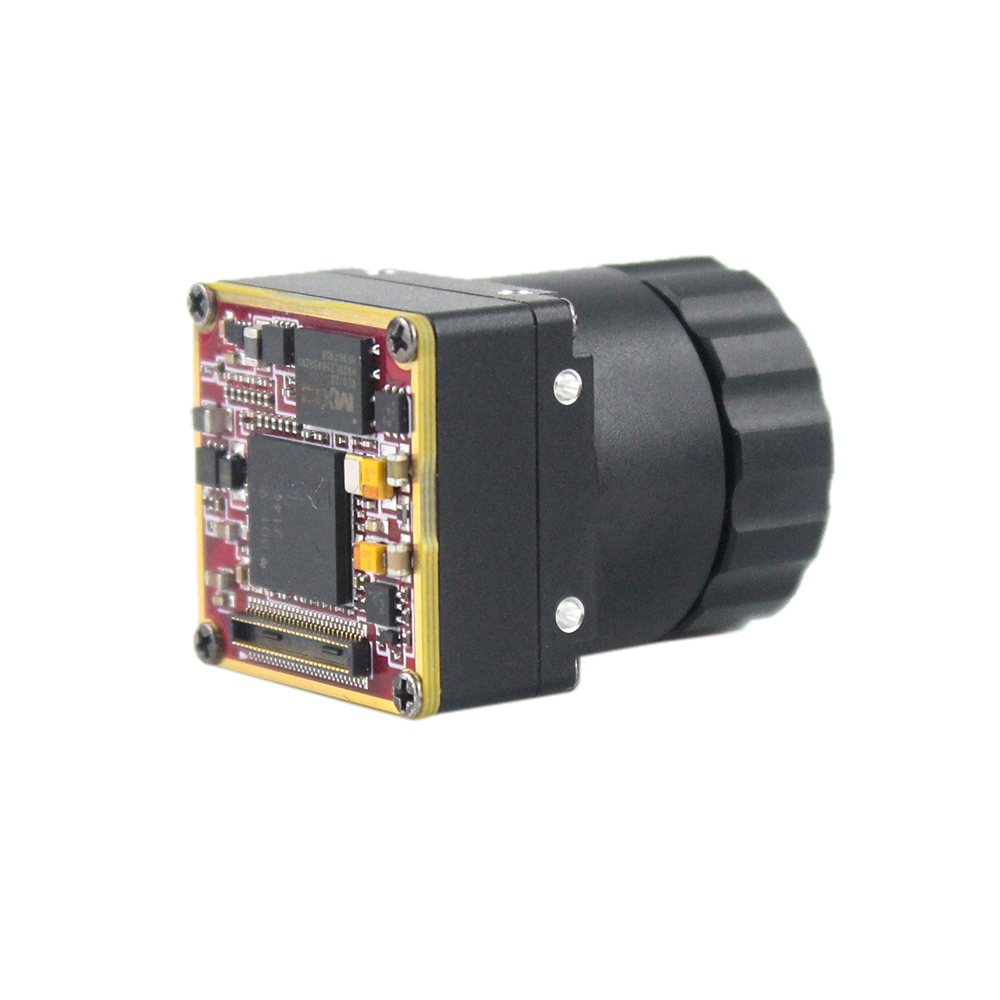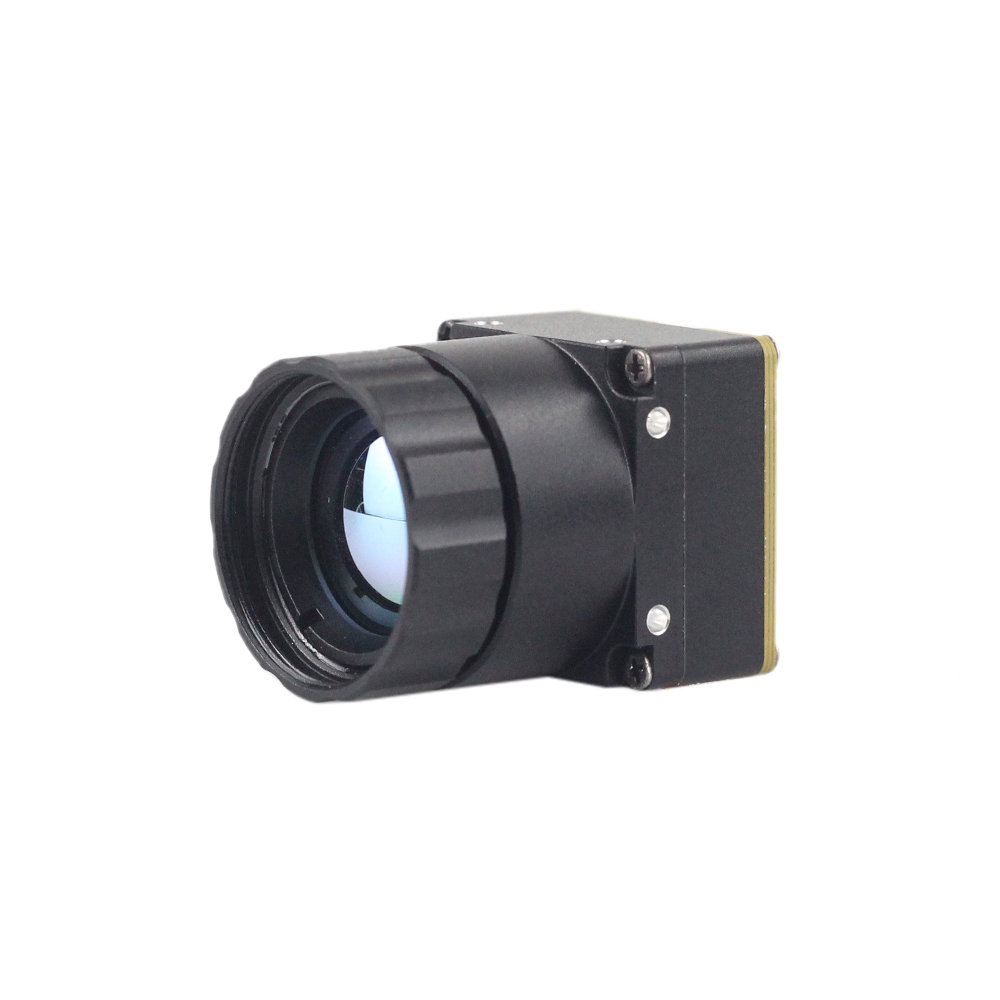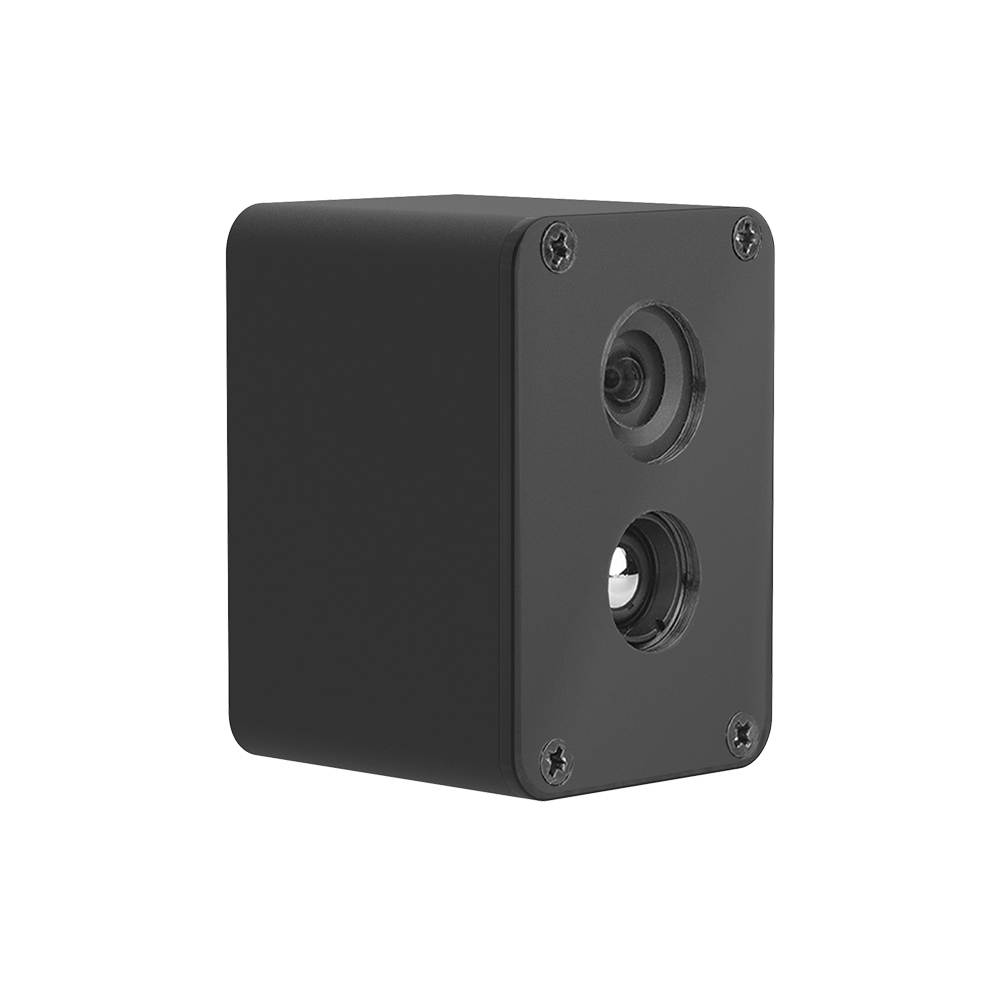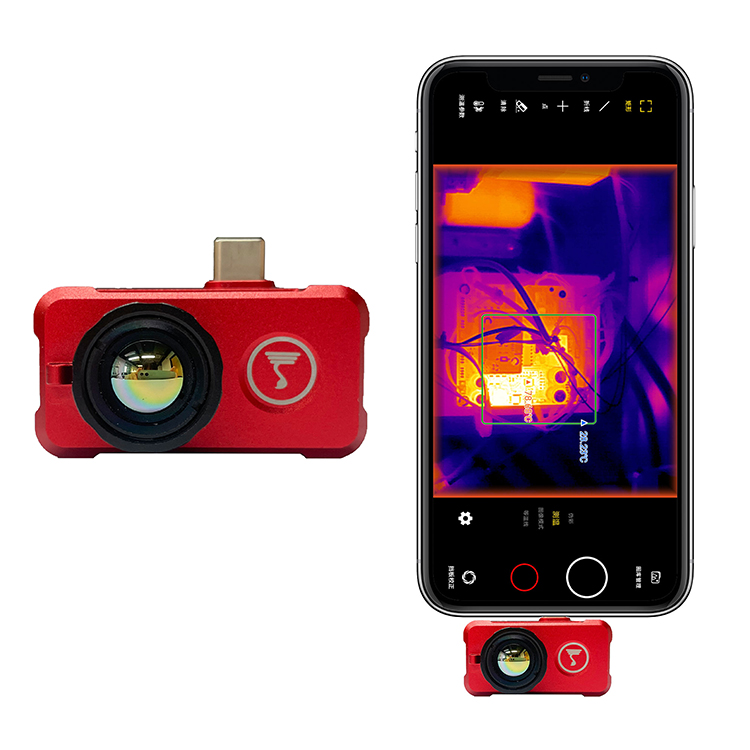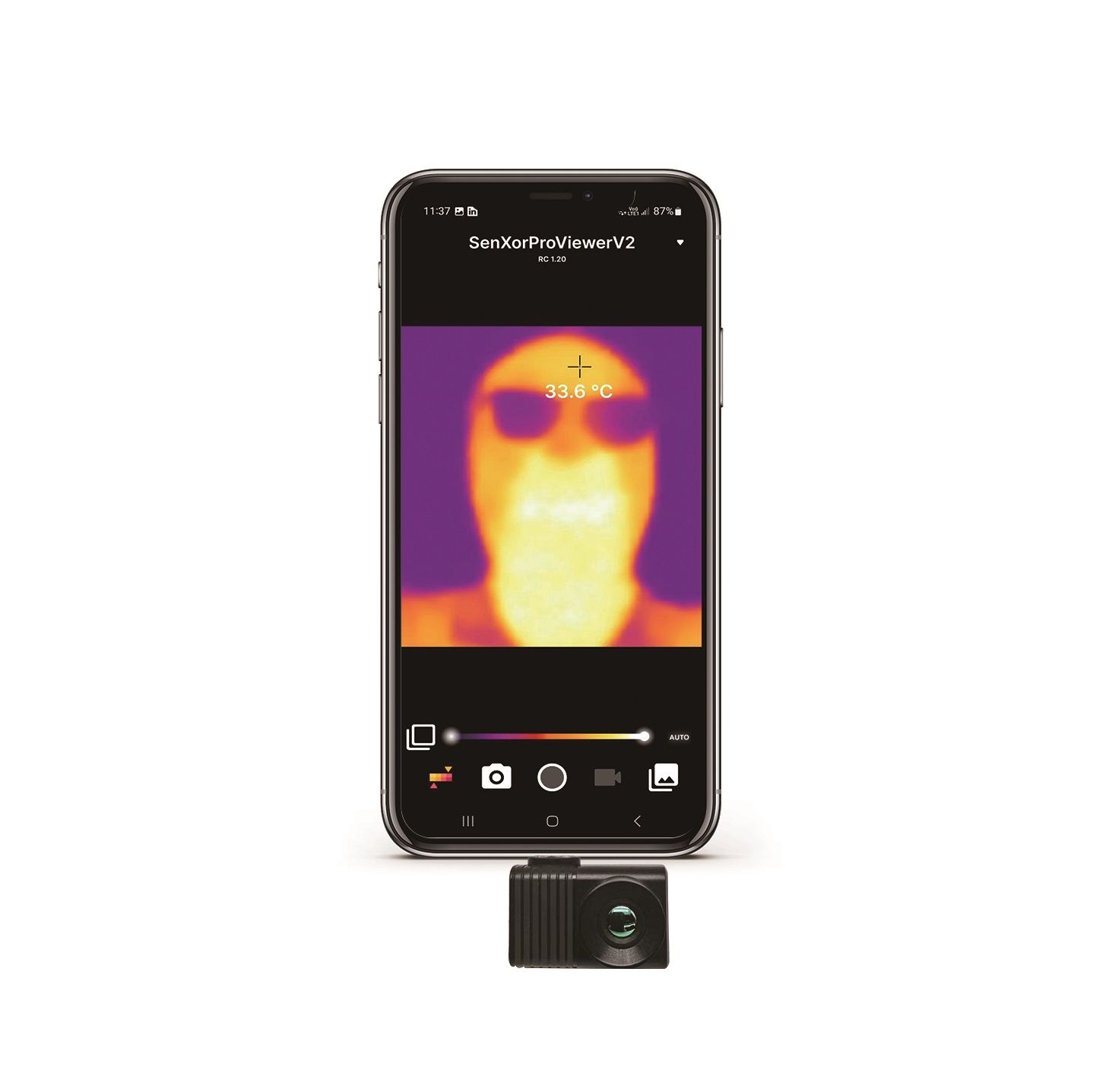Infrared thermal imaging technology to detect empty defects of concrete filled steel tube
2024年10月15日“UAV + thermal imaging” technology helps wildlife survey and protection
2024年11月27日The drone image transmission module is a very important component of the drone. Its main function is to transmit the images and videos taken by the drone to the ground control station or display device in real time. The following is a detailed introduction to the principle and function of the drone image transmission module:
Introduction to the working principle of the drone image transmission module
The working principle of the drone image transmission module mainly revolves around the real-time capture, encoding, wireless transmission and decoding of image signals.
First, the drone’s camera captures the image and video signals of the ground scene. These image signals are usually in high-definition format and have a large amount of data, so they need to be processed for effective transmission. In order to optimize the transmission efficiency, the image transmission module encodes and compresses these signals. Commonly used encoding formats such as H.264 or H.265 can significantly reduce the file size while maintaining high image quality.
Next, the encoded signal needs to be modulated into a form suitable for wireless transmission. The modulation process converts the digital signal into an analog signal so that it can be sent via radio waves. At this time, the image transmission module modulates the signal into radio waves of a specific frequency for easy transmission in the air.
During the transmission process, the image transmission module usually uses frequency hopping technology to quickly switch signals between multiple frequencies to enhance the stability and anti-interference ability of the signal. This means that even if a certain frequency is interfered with, the signal can still be effectively transmitted on other frequencies, thereby improving the reliability of communication.
When the signal reaches the ground receiving device, the receiving end will first demodulate and convert the received wireless signal back into a digital signal. Then, these digital signals will be decoded and restored to a viewable video format. Finally, the decoded video signal will be displayed in real time on the display of the ground control station, and the operator can observe the picture taken by the drone at any time.
Every step in this process is crucial, which ensures that the drone can transmit images and videos to the ground in real time during flight, thereby improving the accuracy of control and the efficiency of task execution. In addition, the design of the image transmission module also takes into account the security and anti-interference of wireless communication, so that the drone can work stably in complex environments. Through this comprehensive working principle, the drone image transmission module realizes efficient and reliable image transmission, greatly expanding the application scenarios of drones.
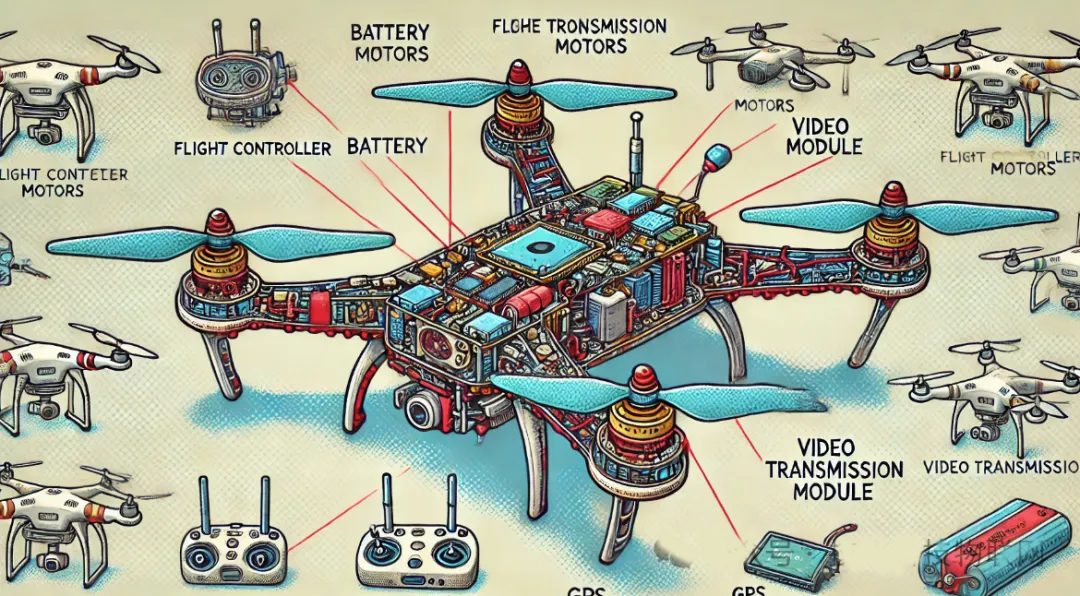
Functions of drone image transmission modules
The functions of drone image transmission modules are mainly to achieve wireless transmission of real-time images and videos, provide clear and instant visual information for operators or automatic systems, and thus improve the practicality of drones in various scenarios.
· Real-time monitoring: The image transmission module allows operators to see the images and videos taken by the drone in real time, helping them to make accurate judgments and adjustments to the flight path, mission progress and surrounding environment of the drone. This is especially critical in complex environments (such as cities, mountains, and forests), helping to avoid collisions or misjudgments.
· Remote control assistance: When operating drones at long distances or in signal blind spots, the image transmission module provides visual information support. Through real-time transmitted video images, operators can control drones more accurately, and maintain accurate flight paths and mission execution even when operating out of line of sight.
· Data recording and storage: The image transmission module not only supports real-time transmission, but also usually has data storage functions, which can save the collected video and image data for subsequent analysis, recording or reporting. This is particularly important for tasks that require data backtracking, such as scientific research, environmental monitoring, and post-disaster assessment.
· Multi-angle, high-definition image acquisition: Most drone image transmission modules support high-definition (HD) or ultra-high-definition (UHD) video transmission, providing clear details and a wide field of view. Operators can observe the target area through multi-angle images for more comprehensive scene analysis, such as building structure inspection, agricultural monitoring, etc.
· Enhanced security and stability: Image transmission modules are usually equipped with anti-interference technology (such as frequency hopping) to ensure the stability of data transmission, especially in scenes with complex environments or severe interference, which can effectively ensure the smoothness of image transmission. In addition, the encrypted transmission function improves the security of the image transmission module and prevents data from being intercepted or tampered with, which is particularly suitable for fields with high data security requirements such as military reconnaissance.
· Information sharing and collaboration: In tasks that require teamwork, the real-time transmission function of the image transmission module allows remote team members to receive video data synchronously, promoting information sharing. For example, in a rescue mission, the ground command center and the on-site team can watch the real-time picture at the same time, so as to make quick decisions and improve rescue efficiency.
· Support intelligent analysis: Some high-end image transmission modules support edge computing or AI analysis, and automatically analyze target information after transmitting video data back to the ground, such as population counting and vehicle identification, to provide intelligent data support for rescue, monitoring and patrol.
The function of the drone image transmission module is not just simple image transmission, but also supports the real-time, stability, security and diversified application requirements of data. These functions make drones more practical in multiple industries such as agriculture, construction, and rescue, and also provide key support for mission execution in complex environments.
Technical differences between analog image transmission and digital image transmission in the UAV image transmission module
There are significant technical differences between analog image transmission and digital image transmission in the UAV image transmission module, which are mainly reflected in the following aspects:
1. Signal processing method:
· Analog image transmission: Analog image transmission refers to the process of source and channel processing of analog image signals that continuously change in time (including space) and amplitude, and then transmits them through analog channels or achieves storage through analog recording devices.
· Digital image transmission: Digital image transmission is a technology that converts image signals into digital signals for transmission. The principle is to convert the image signal into a digital signal through sampling, quantization, encoding, etc., and then transmit it through the transmission medium (such as digital network, wireless frequency band, etc.).
2. Delay and anti-interference ability:
· Analog image transmission: Analog image transmission has great advantages in delay, so it is widely used in the fields of racing and flying.
· Digital image transmission: Digital image transmission technology has gradually become dominant due to its higher image quality, lower latency and stronger anti-interference ability. For example, DJI’s digital image transmission system achieves the same low latency as analog transmission, achieving an end-to-end delay of 28 milliseconds from the camera to the image transmission to the glasses screen, and the remote control delay is only 7 milliseconds.
3. Transmission method and frequency:
· Analog image transmission: When standard analog FPV signals transmit signals up to 10MHz above and below the set frequency, the maximum allocated channel bandwidth is 20MHz.
·Digital image transmission: Usually 2.4G or 5.8G digital signals are used for video transmission. The working frequency band supported by the digital image transmission system can reach 100MHz to 6GHz.
4. Application scenarios:
· Analog image transmission: Due to its low-latency characteristics, analog image transmission still has its unique advantages in application scenarios that require fast response (such as racing flights).
· Digital image transmission: Digital image transmission is more popular in aerial photography, professional photography and other fields because of its high quality and long-distance transmission capabilities.
Analog image transmission has advantages in latency and is suitable for application scenarios that require high real-time performance.

How is the image transmission quality of the drone image transmission module in different environments?
Evaluating the image transmission quality and stability of the drone image transmission module in different environments requires consideration of multiple factors and test methods. The following are detailed evaluation steps:
Field testing in different scenarios is a key step in evaluating the performance of the drone wifi image transmission module. These scenarios include indoor and outdoor open spaces, obstructions, interference and other environments. Field testing can determine the reliability and stability of the image transmission module in various environments.
The transmission rate directly affects the clarity of real-time image transmission. Therefore, it is necessary to conduct a detailed evaluation of the transmission rate of the wifi image transmission module to ensure that it can meet the needs of practical applications.
Use image quality indicators such as brightness, contrast and structure to evaluate the quality changes during image transmission. For example, SSIM (Structural Similarity Index) can be used as a quantitative description of image quality. The closer its value is to 1, the smaller the difference between images and the higher the similarity.
Image transmission performance is affected by factors such as signal reception sensitivity, antenna, obstruction and electromagnetic interference. Therefore, it is necessary to evaluate the performance of the image transmission module under different interference conditions to ensure that it can still maintain stable transmission in complex environments.
The latency requirement for real-time image monitoring is low, so it is necessary to measure the delay between the aircraft and the remote control and ensure that it is within an acceptable range. For example, the delay of some image transmission solutions is about 120 milliseconds.
Different weather conditions such as high temperature, low temperature, strong wind and dust will affect the flight performance and image quality of the drone. High temperature may cause component damage, low temperature may reduce battery efficiency, strong wind will cause vibration, and dust will affect image clarity.
Wireless image transmission mainly uses three frequency bands: 1.2GHz, 2.4GHz and 5.8GHz, of which the 2.4GHz band is more commonly used. The choice of different frequency bands will affect the transmission distance and anti-interference ability.
The UDP-based application layer is used to implement the confirmation mechanism, retransmission mechanism and window confirmation mechanism to ensure the reliable transmission of the video. The receiving end receives the data stream through a queue and performs sequence number confirmation to ensure the reliable transmission of UDP.
How does the frequency hopping technology supported by the drone image transmission module work?
Frequency hopping technology (FHSS) in the drone image transmission module is a wireless communication technology that is mainly used to enhance the reliability and anti-interference ability of the signal. The following are the working principles and characteristics of frequency hopping technology:
1. Working principle of frequency hopping technology
· Frequency hopping: When sending and receiving data, frequency hopping technology quickly switches different carrier frequencies within a predetermined frequency range. This means that the signal will not be continuously sent on a single frequency, but will quickly jump between multiple frequencies according to certain rules.
· Frequency hopping sequence: The transmitter and receiver use the same frequency hopping sequence, which defines the frequency to be used within a specific time interval. The frequency hopping sequence can be pseudo-randomly generated to ensure that the communicating parties exchange data at the same frequency at the same time.
· Synchronization: In order to ensure the correct reception of data, the transmitter and receiver must be synchronized. If the receiver can accurately predict the frequency hopping sequence of the transmitter, it can successfully receive the data.
· Anti-interference ability: Since the signal jumps between multiple frequencies, even if a certain frequency is interfered or blocked, the signal can still be transmitted on other frequencies, thereby improving the reliability of communication.
2. Advantages of frequency hopping technology
· Strong anti-interference ability: Since the frequency is constantly changing, frequency hopping technology can effectively resist interference from other devices or environmental noise and ensure the stability of signal transmission.
· Improve security: Since the frequency hopping signal is sent on multiple frequencies, it is difficult for eavesdroppers to capture the complete signal, which improves the security of communication to a certain extent.
· Spectral efficiency: Frequency hopping technology can transmit multiple signals on limited spectrum resources and improve the utilization of the spectrum.
· Reduce multipath effect: Frequency hopping can effectively reduce multipath propagation (that is, the interference caused by the signal reaching the receiving end through different paths) and improve the clarity of the signal.
3. Application scenarios
In the wireless image transmission module of drones, frequency hopping technology is often used in real-time video transmission, control signal transmission and other occasions, especially in complex environments (such as cities and areas with high-rise buildings), it can effectively ensure signal quality.
Frequency hopping technology provides efficient, stable and secure wireless communication by quickly switching signals between multiple frequencies. This enables drones to perform reliable data transmission in a variety of environments, improving the application performance of drones.
The specific role of UAV image transmission modules in aerial photography, agricultural monitoring, disaster relief and other applications
The UAV image transmission module has significant functions and advantages in aerial photography, agricultural monitoring, disaster relief and other applications.
In terms of aerial photography, the UAV image transmission module can transmit high-definition or even ultra-high-definition images in real time, ensuring the color restoration and clarity of the image. This high-bandwidth transmission technology allows drones to obtain high-quality image data and provide intuitive and accurate information support for various application scenarios. For example, in flash flood disaster prevention and control areas, drones take photos and video data and process them to produce 720-degree panoramic video images to provide auxiliary support for decision-making.
In terms of agricultural monitoring, the UAV image transmission module overlooks farmland from a high altitude, obtains images and data of farmland in real time, and helps farmers analyze the growth of farmland. In addition, drones can monitor crop and vegetation indexes through image analysis and remote sensing technology to monitor pests and diseases and plant health. These functions not only improve the efficiency of agricultural production, but also enhance the ability to monitor the crop growth environment.
In terms of disaster relief, the application of UAV image transmission modules is also crucial. Drones can quickly penetrate into disaster scenes, obtain on-site image data and transmit it to the ground control station in real time. This not only improves rescue efficiency, but also provides rescuers with valuable search and rescue information. For example, during the earthquake rescue in Ya’an, Sichuan, drones carrying communication equipment served as temporary relay stations and established wireless communication links, providing strong support for the rescue work. In addition, drones can also perform emergency surveying and mapping, collecting all the conditions at the disaster site and transmitting them to the on-site command center, providing reliable data guarantee for post-disaster reconstruction.
What are the mainstream drone image transmission modules on the market?
There are many mainstream drone image transmission modules on the market, and each module has different technical specifications and performance. The following are some major drone image transmission modules and their technical specifications and performance comparisons:
1. Feirui Intelligent 8km WiFi Drone Image Transmission Module:
· Transmission distance: supports ultra-long-distance high-definition transmission, with a maximum transmission distance of up to 8 kilometers.
· Application scenarios: suitable for complex environments such as urban high-rise buildings and suburbs.
2. DJI Enhanced Image Transmission Module:
· Technical features: supports ASDIV (transmitting antenna selection), better performance, and can better cope with complex flight scenarios.
· Network connection: built-in eSIM, no additional card can be used, also supports physical nano-SIM card, can access 4G network, and provide high-speed and stable networking services.
· Communication distance: The maximum communication distance is 15 kilometers, supports 2.4 GHz and 5.8 GHz dual-band, and can switch intelligently.
3. COFDM series long-distance high-definition image transmission radio:
· Transmission distance: 1 watt power radio line of sight distance can reach 20 kilometers, 5 watt power radio line of sight distance can reach more than 50 kilometers.
· Anti-interference ability: Super strong anti-multipath ability, suitable for complex working environment, support high-speed movement (greater than 600 kilometers per hour).
· Video encoding: Broadcasting/surveillance-level high-definition video encoding, adaptive HDMI/HD-SDI/CVBS, support 1080P/1080i/720P/576P.
4. Sihid wireless image transmission system:
· Transmission distance: At 2.4GHz/1w transmission power, the transmission distance can reach 2 to 6 kilometers.
· Image clarity: Supports 1080P/60 frames of image clarity.
· Delay: System delay is about 180ms to 250ms.
5. CUAV TeleLink Link Screen Integrated Remote Control:
· Processor: Pengpai S1. Contains 4-core Cortex A53 @2.2GHz and 1.4GHz, and 4-core Mali-T860 GPU.
· Image transmission distance: 20km under FCC standard, 12km under CE standard.
· Image transmission delay: minimum 70ms (excluding delay caused by input source).
· Image quality: supports 720p@30fps and 1080p@30/60fps.
6. SKYLAB long-distance high-power drone WiFi module SKW77:
· Transmitting power: +28dBm, capable of real-time and clear transmission of pictures and images.
These drone image transmission modules each have their own unique advantages and application scenarios. For example, Feirui intelligent modules are suitable for scenarios that require ultra-long-distance transmission; DJI enhanced image transmission modules perform well in complex flight environments; the COFDM series has significant advantages in long distance and anti-interference; and CUAV TeleLink provides higher image quality and low-latency transmission.


